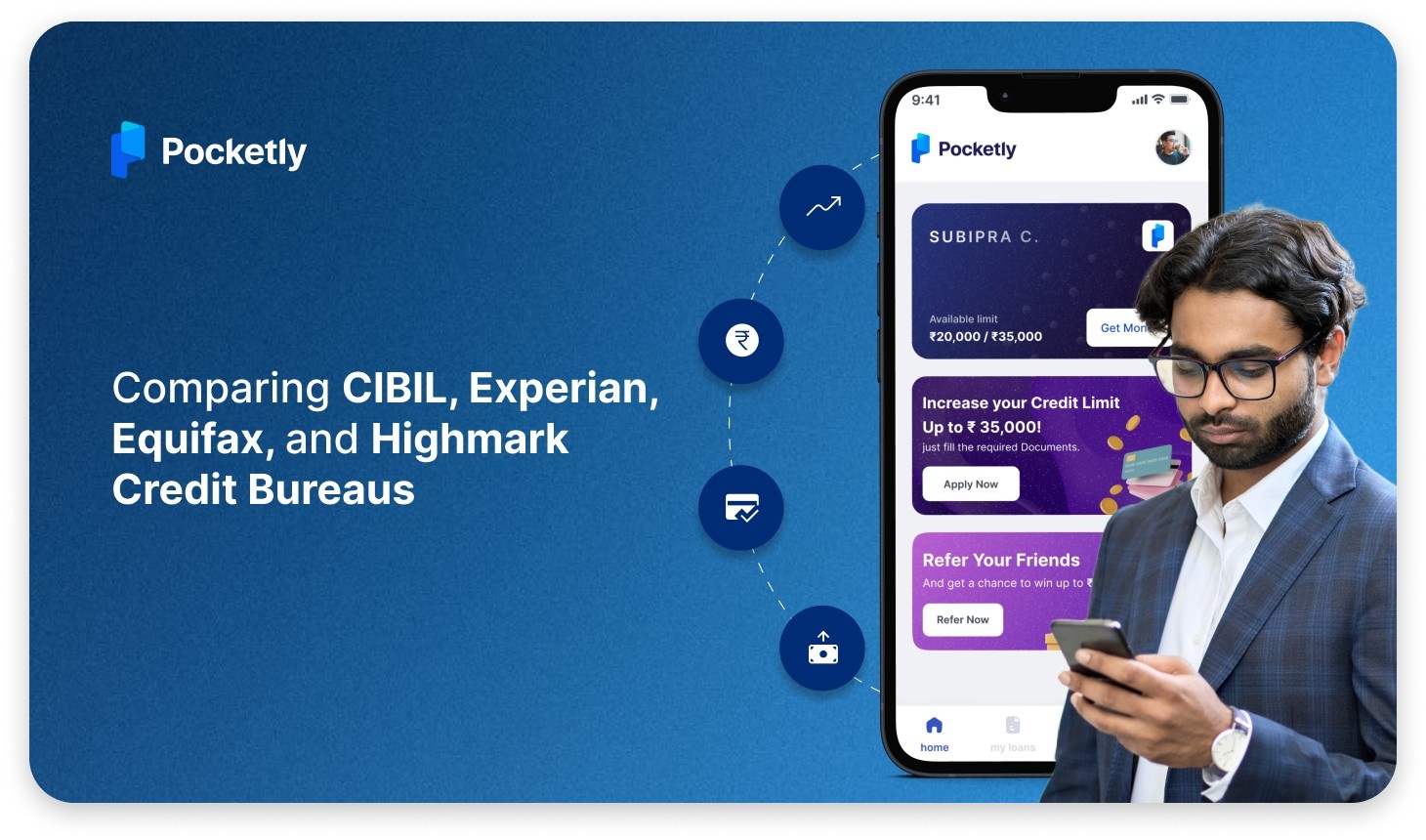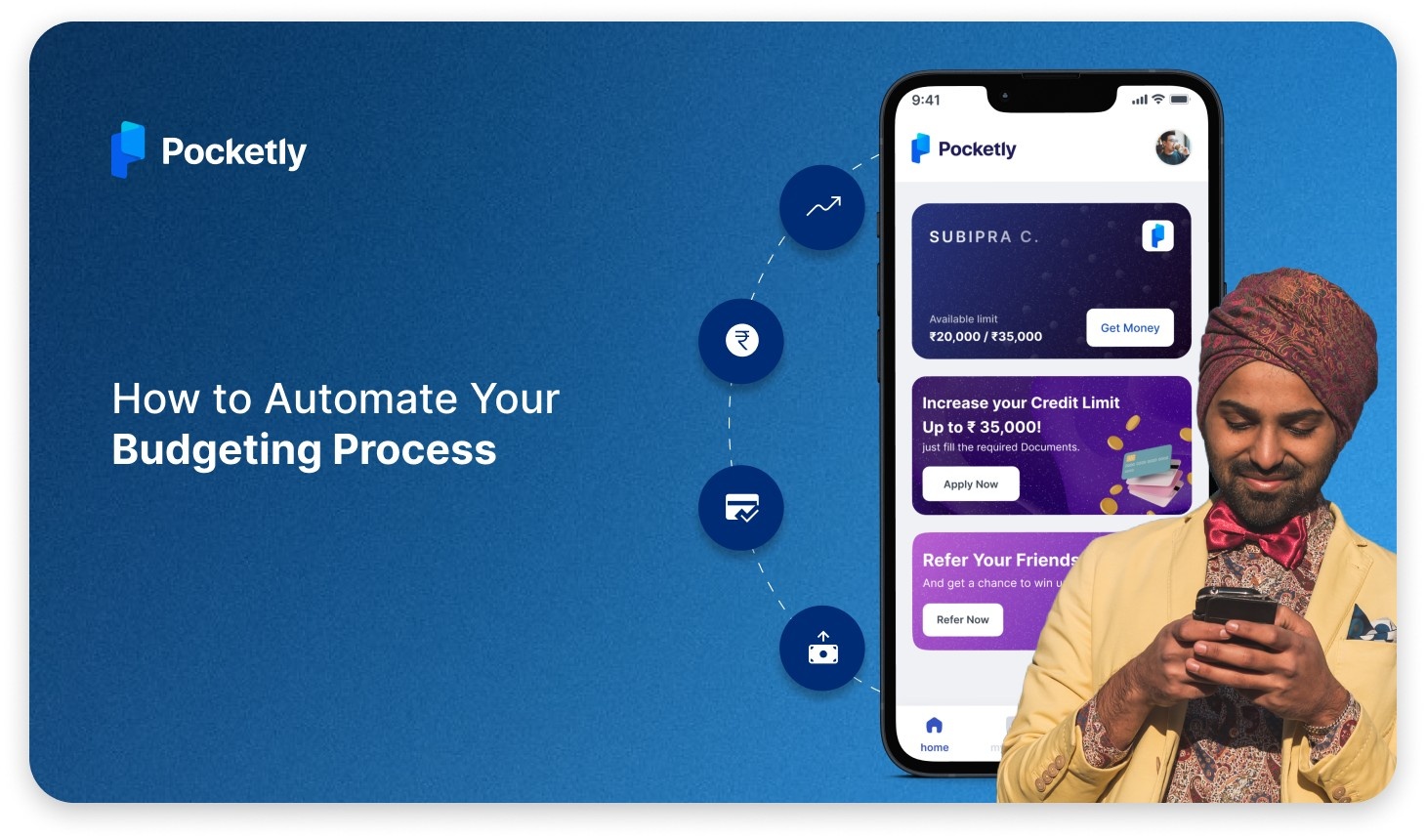
If you earn ₹40,000 per month, you may be wondering how much personal loan you can qualify for. Lenders evaluate multiple factors, including your income, credit score, existing financial obligations, and employment stability, before determining the loan amount.
Typically, with a ₹40,000 salary, you could be eligible for a loan ranging from ₹8 lakh to ₹12 lakh, depending on the lender’s policies and your overall financial profile. However, to get the best loan offer, you must maintain a strong credit score, a healthy repayment history, and a low debt-to-income ratio.
This guide will help you understand the key factors that influence loan eligibility, the calculation methods used by lenders, the required documentation, and how to maximise your chances of approval. Let’s dive in!
Key Features and Benefits of Personal Loans for a ₹40,000 Salary
A personal loan can provide financial flexibility for various needs, such as emergencies, home renovations, education, or debt consolidation. With minimal documentation, quick disbursal, and flexible repayment options, personal loans are a convenient financing option.
Below are the key features and benefits you can expect when applying for a personal loan with a ₹40,000 salary:
Key Features of a Personal Loan for ₹40,000 Salary Earners
- Loan Amount Range – Based on your salary and financial profile, you can avail a loan ranging from ₹8 lakhs to ₹12 lakhs.
- Flexible Repayment Tenure – Repayment options range from 12 to 60 months, allowing you to choose a tenure that suits your budget.
- No Collateral Required – Most personal loans are unsecured, which basically means that you don’t have to pledge any assets as security.
- Fast Approval & Disbursement – With instant digital processing, approved loans are often disbursed within 24 hours.
- Minimal Documentation – Basic KYC documents, salary slips, and bank statements are usually enough to apply.
- Prepayment & Foreclosure Options – Many lenders allow you to prepay or foreclose your loan with minimal charges, helping you save on interest.
Benefits of a Personal Loan for ₹40,000 Salary Earners
- Financial Flexibility – Use the loan for medical emergencies, education, home renovation, or travel as needed.
- Improves Credit Score – Timely EMI payments help boost your credit score, making it easier to access credit in the future.
- Affordable Interest Rates – With a stable salary, you can secure a competitive interest rate, reducing the overall repayment burden.
- Multi-Purpose Usage – Unlike home or car loans, personal loans can be used for any financial requirement without restrictions.
- Debt Consolidation – Helps you combine multiple high-interest debts into a single manageable EMI, simplifying repayments.
A personal loan with a ₹40,000 salary offers convenience, financial security, and quick access to funds. Ensuring a good credit score, stable income, and a manageable EMI plan can help you get the best loan terms that fulfil your needs.
Eligibility Criteria for a Personal Loan of ₹40,000 Salary
Before applying for a ₹40,000 personal loan, it's important to check whether you meet the general eligibility requirements. Most lenders keep the criteria simple to ensure quick approval, even if you have a low salary or a less-than-perfect credit score.
Who Can Apply?
- Age Requirement: You must typically be between 18 to 40 years old to qualify. Some lenders might require a minimum age of 21.
- Income Stability: Whether salaried or self-employed, lenders usually require a monthly income of ₹15,000 to ₹25,000 to ensure repayment capacity.
- Credit Score: A healthy score of 750 or above is preferred, but some lenders offer loans even if your credit score is lower.
- Employment & Residential Stability: Some lenders may require proof of stable employment or a consistent address to verify repayment reliability.
Documents Required for Loan having a ₹40,000 Salary
The required documents may vary depending on your employment status. Here’s a quick overview:
| Category | Documents Required |
|---|---|
| Salaried Individuals |
- Aadhaar Card, PAN Card - Last 3 months’ salary slips - Last 3-6 months’ bank statements - Employment ID or Certificate |
| Self-Employed |
- Aadhaar Card, PAN Card - Last 6 months’ bank statements - Last year’s Income Tax Returns (ITR) - Business registration proof |
| Students |
- Aadhaar Card, PAN Card - College ID or Admission Letter - Proof of part-time income (if any) - Income proof from a co-signer or guarantor (if required) |
Ensuring you have all the necessary documents ready speeds up the loan approval process.
Methods to Calculate Eligible Loan Amount
Lenders determine your loan eligibility using different financial assessment methods to ensure that you can comfortably repay the borrowed amount. The most common methods used are the Multiplier Method and the EMI/NMI Ratio (Fixed Obligation to Income Ratio - FOIR). Understanding these methods can help you estimate how much loan you qualify for based on your ₹40,000 salary.
1. Multiplier Method
This is a simple way to calculate your eligible loan amount. Lenders use a multiplier (typically 20 to 30 times your net monthly income) to determine how much you can borrow.
How to Calculate Using the Multiplier Method
- Formula: Loan Amount = Net Monthly Salary × Multiplier
- Example Calculation:
- Suppose your net salary is ₹40,000 per month, and the lender uses a 20x multiplier, your estimated loan eligibility would be ₹8 lakh.
- If a 30x multiplier is used, you may qualify for up to ₹12 lakh.
Key Factors Affecting the Multiplier
- Higher credit scores (750+) allow for a higher multiplier (closer to 30x).
- Stable employment with a reputed company can result in better eligibility.
- Existing financial obligations (loans, credit card dues) may lead to a lower multiplier.
2. EMI/NMI Ratio (Fixed Obligation to Income Ratio - FOIR)
Lenders also assess your EMI to Net Monthly Income (NMI) ratio to make sure your total loan commitments stay within a safe and manageable percentage of your earnings. Typically, lenders allow up to 50-60% of your monthly income to be used for loan repayments.
How to Calculate Using EMI/NMI Ratio
- Formula: Maximum EMI Allowed = Net Monthly Income × Acceptable FOIR %
- Example Calculation:
- If your net salary is ₹40,000 and the lender allows a FOIR of 50%, your maximum allowable EMI is ₹20,000.
- If you already have an existing EMI of ₹5,000, the new loan EMI should not exceed ₹15,000.
Key Factors Affecting EMI/NMI Ratio
- Higher income levels allow for a better FOIR percentage.
- A lower debt-to-income ratio (DTI) improves your loan eligibility.
- Existing EMIs and credit card dues can impact the loan amount you qualify for.
3. Variation in Loan Multiples Based on Company Status
Some lenders offer different loan eligibility criteria based on your employer. If you work for a highly reputed organisation (MNCs, government jobs, or blue-chip companies), you may be eligible for:
- A higher loan multiplier (closer to 30x)
- Better interest rates
- Longer repayment tenures
However, if you work in a less stable job profile or a start-up, lenders may reduce the multiplier and FOIR limit, leading to a lower loan amount eligibility.
By understanding these methods and improving key factors like credit score and job stability, you can enhance your personal loan eligibility and secure the best possible loan terms.
Estimating Your Eligible Loan Amount with a ₹40,000 Salary
If you're earning ₹40,000 per month, your personal loan eligibility depends on different factors, including your credit score, existing financial obligations, and lender-specific criteria. Lenders typically determine your loan amount using income multipliers and fixed obligation to income ratio (FOIR).
Below is an estimate of the loan amount you may qualify for based on industry standards:
Estimated Loan Amount Range
- Loan Amount Based on Multiplier Method – Lenders generally offer loans between 20 to 30 times your net monthly income, meaning you may qualify for a loan between ₹8 lakh to ₹12 lakh.
- Loan Amount Based on FOIR (Fixed Obligation to Income Ratio) – If your total EMIs (including the new loan) do not exceed 50-60% of your income, your eligible loan amount will be adjusted accordingly.
- Effect of Credit Score – A CIBIL score above 750 improves your chances of getting a higher loan amount at better interest rates, while a low score may reduce eligibility.
- Impact of Existing EMIs – If you already have existing loans, your lender will deduct those from your available EMI capacity, reducing your eligible loan amount.
- Variation by Lender – Different banks and NBFCs have varying eligibility criteria, so it’s advisable to compare multiple lenders to find the best offer.
To get a precise loan estimate, you can use online personal loan eligibility calculators that factor in your salary, credit score, and financial commitments.
Factors That Influence Personal Loan Eligibility
When applying for a personal loan with a ₹40,000 salary, lenders assess multiple factors to determine whether you qualify for the loan and how much you can borrow. While your income level is important, other aspects like credit score, employment stability, and financial commitments also play a crucial role.
Here are the key factors that impact personal loan eligibility:
- Monthly Income – A higher salary increases your borrowing capacity since lenders consider income as an indicator of repayment ability.
- Credit Score – A healthy and strong CIBIL score of 750 or above improves approval chances and helps secure lower interest rates.
- Debt-to-Income Ratio (DTI) – Lenders prefer applicants whose existing EMI obligations do not exceed 50-60% of their monthly income.
- Employment Stability – Having a stable job in a reputed company improves eligibility, while frequent job changes can be seen as a risk.
- Loan Tenure – Getting a longer repayment period eventually reduces your EMI burden, making it easier to qualify for a higher loan amount.
- Existing Financial Obligations – If you have multiple active loans or high credit card dues, lenders may reduce your loan eligibility.
- Type of Lender – Banks and NBFCs have different eligibility criteria; some digital lenders are more flexible for lower credit scores.
- Company Category – Employees of MNCs, government organisations, and established companies may qualify for better loan terms compared to those working in small businesses or startups.
By managing a good credit profile, stable income, and a low debt-to-income ratio, you can enhance your personal loan eligibility and secure better loan offers.
Also read our guide on, Personal Loan Strategy on ₹ 15000 Salary in India.
How Loan Tenure Affects EMI and Interest Costs
When taking a personal loan, the loan tenure (repayment period) plays a very important role in determining your monthly EMI and total interest payable. A shorter tenure leads to higher EMIs but lower total interest, while a longer tenure results in lower EMIs but higher overall interest costs.
Understanding the impact of short-term vs. long-term loans can help you choose the best repayment period based on your financial capacity and goals.
Comparison of Short-Term vs. Long-Term Loans
| Loan Amount | Tenure | Interest Rate | Monthly EMI | Total Interest Paid | Best For |
|---|---|---|---|---|---|
| ₹5,00,000 | 2 years (Short-Term) | 12% p.a. | ₹23,537 | ₹1,64,888 | Faster repayment, lower total interest |
| ₹5,00,000 | 5 years (Long-Term) | 12% p.a. | ₹11,122 | ₹1,67,320 | Lower EMI, easier budget management |
| ₹5,00,000 | 7 years (Long-Term) | 12% p.a. | ₹8,854 | ₹2,42,722 | Low EMI but higher total interest |
Key Takeaways
- Short-Term Loans: Higher EMIs but less total interest, making them ideal if you have a higher repayment capacity.
- Long-Term Loans: Lower EMIs but higher overall interest, best suited for those who need financial flexibility.
- Choosing the right tenure depends on your monthly budget, cash flow, and long-term financial plans.
Before finalising your loan, use an EMI calculator to find a tenure that balances affordability and cost-effectiveness.
Pro Strategies to Boost Your Chances of Getting a Personal Loan
Securing a personal loan with a ₹40,000 salary requires more than just meeting the simple eligibility criteria. To effectively improve your chances of getting a higher loan amount with better interest rates, you need to strengthen your financial profile.
Here are some expert strategies to help you qualify easily:
- Maintain a Healthy Credit Score – A healthy CIBIL score of 750+ increases approval chances and helps secure lower interest rates. Pay bills and EMIs on time to keep your score healthy.
- Reduce Your Existing Debt – Lenders assess your Debt-to-Income (DTI) ratio before approving a loan. Paying off credit card dues and other loans before applying improves eligibility.
- Opt for a Longer Loan Tenure – A longer repayment period reduces monthly EMIs, making your loan more affordable and improving approval chances.
- Choose the Right Lender – Compare different banks, NBFCs, and digital lenders to find those offering higher loan amounts and relaxed eligibility criteria.
- Show Additional Income Sources – If you have freelance income, rental income, or side business earnings, include these in your application to boost your repayment capacity.
- Apply with a Co-Applicant or Guarantor – Adding a spouse, parent, or co-applicant with a strong credit profile can increase your loan amount eligibility.
- Avoid Multiple Loan Applications at Once – Too many loan inquiries hurt your credit score. Apply to only one or two lenders after proper research.
- Maintain a Stable Employment Record – Lenders prefer applicants with at least 1-2 years of stable job history, especially with reputed companies or MNCs.
By following these proven strategies, you can increase your personal loan approval chances, qualify for a higher loan amount, and secure better interest rates.
With the cost of living steadily increasing, managing finances on a ₹40,000 salary can sometimes become challenging, especially during unexpected expenses. But there’s no need to stress—Pocketly is here to support you with instant loans up to ₹25,000, ensuring a seamless and hassle-free borrowing experience whenever you need it.
Why Pocketly Stands Out for Instant Personal Loans
When unexpected expenses arise, securing a loan quickly and without hassle is crucial. Pocketly makes borrowing simple, efficient, and stress-free. Here’s why it’s a smart choice:
- Fast Approvals & Quick Disbursal – No more waiting for days. Once approved, the funds are transferred to your account within some minutes, giving you immediate access to cash.
- Flexible Loan Amounts – Whether you need ₹1,000 for minor expenses or ₹25,000 for urgent financial needs, Pocketly offers loan options tailored to your situation.
- Minimal Documentation – Skip the piles of paperwork. Just submit basic KYC documents, and you’re ready to apply.
- Complete Transparency – No hidden charges, no last-minute surprises. Pocketly ensures that all fees, interest rates, and repayment terms are clearly outlined before you borrow.
- Credit-Friendly Approach – Even if your credit history isn’t perfect, Pocketly considers other financial factors, making it easier to access funds compared to traditional banks.
- Flexible Repayment Plans – Choose a repayment schedule that works for you, ensuring you can manage your EMIs without financial strain.
With Pocketly, borrowing is straightforward, transparent, and designed to meet your needs—because access to financial support should never be complicated.
To apply for a loan, read our guide on Steps in the Personal Loan Application Process.
Conclusion
Managing finances with a ₹40,000 salary doesn’t have to be overwhelming, especially when you have access to the right financial tools. Whether you need funds for an emergency, a big purchase, or to consolidate debt, understanding your personal loan eligibility can help you make informed borrowing decisions.
With a good credit score, reducing existing liabilities, and choosing the loan tenure, you can maximise your borrowing potential while keeping repayments manageable.
And if you’re looking for a quick, hassle-free loan without long waiting times and endless paperwork, Pocketly is here to help. With instant approvals, flexible repayment options, and no hidden charges, borrowing has never been this easy.
Get started today and experience a smarter way to borrow!
FAQs
How much personal loan can I get with a ₹40,000 salary?
Your loan eligibility mostly depends on factors like your credit score, existing debts, and lender policies. Generally, lenders offer loans 20-30 times your monthly salary, meaning you could qualify for a loan between ₹8 lakh to ₹12 lakh, subject to approval conditions.
What credit score is required to get a personal loan on a ₹40,000 salary?
Most lenders prefer a CIBIL score of 750 or above for better interest rates and higher loan amounts. However, some lenders may approve loans for scores as low as 650, but at slightly higher interest rates.
What should I do if my loan application is delayed?
If your loan status hasn’t changed for a long time, check for missing documents, pending verification, or bank holidays. You can also contact your lender’s customer support for an update.
Can I get a loan from Pocketly if I have a low credit score?
Yes! Pocketly provides loan options even if you have a low or no credit score, making it ideal for first-time borrowers and students.
What documents are needed?
Only basic KYC documents—PAN card, Aadhaar card, and bank statement—all uploaded online. You don’t need to deal with any physical paperwork.
Do I need a credit score?
No credit score is required. Pocketly welcomes first-time borrowers, too. It’s designed for everyone, including those new to credit.
What are the repayment options?
Flexible EMIs allow you to choose a repayment plan that fits your budget. You’ll have complete control over how you repay.
Is my data secure?
Yes, Pocketly uses advanced encryption to keep your personal and financial data safe. Your privacy is our priority.
















